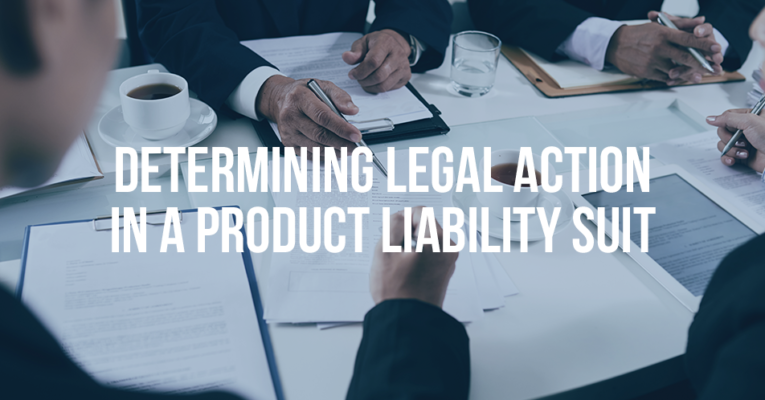DETERMINING LEGAL ACTION IN A PRODUCT LIABILITY SUIT

Annually, defective and dangerous products are causing injuries to many customers. When this occurs, the courts will ask a series of questions including how the injury occurred, if there were issues with the product, and how severe the injuries were for the individual. When a product is defective, it means that it has become dangerous to an unreasonable degree when being utilized for its intended purpose without any alterations occurring. Those who have sustained personal injuries from defective products may have the right to a personal injury claim.
Types of Product Defect Claims
Under most circumstances, product defects will fall into three categories including:
- Design Defects. These defects include faulty designs whereby specifications promise the product will perform one way and it becomes faulty during regular use.
- Manufacturing Defects. These defects include the stability of a product or other unintended defects of the product during the manufacturing process.
- Marketing Defects. These defects involve the manner in which products are sold including the inadequacy of instructions or warnings.
Is There a Governing Law for Defective Products?
Product liability is the law that governs defective products. Under this area of law, it’s the responsibility of the designer, distributor, manufacturer or retailer to ensure any consumer product will not cause harm to their consumer base. They must meet three conditions for recovering injuries their defective products may cause and they include:
- An unreasonably dangerous defect was found on or produced by the product.
- When the product was being used in the way it was intended, it caused an injury from the defect.
- There were no substantial changes regarding the operation in comparison to how it was initially sold.
What are the Legal Remedies?
There is a myriad of legal remedies for those who have experienced the effects of consumer products that are defective or dangerous. They vary depending on the situation, however, and are grouped under product defect cases including negligence and strict liability.
- Negligence. Liable defendants, like those retailers or manufactures, for example, may have to pay plaintiff damages. Under these circumstances, proof has been provided that a breach has occurred between the manufacturer and the plaintiff, an injury occurred as a result of this breach, and the effect caused the plaintiff damages.
- Strict Liability. Under these circumstances, regardless of the level of care occurring from the manufacturer, they are “strictly” liable for defects in the product that occurred throughout the manufacturing process. It isn’t a requirement for the plaintiff to prove negligence in these cases when defects result from errors in manufacturing.
Consult With a Personal Injury Lawyer
If you find yourself in need of a personal injury attorney in Houston, TX, then the team at Mukerji Law Firm stands ready to advocate before the court on your behalf. By working with your best interest in mind, our team of attorneys will work tooth-and-nail to stand up to insurance companies, corporations, or individuals who are responsible for your injury, illness, or other setbacks. Contact us today to learn more.
